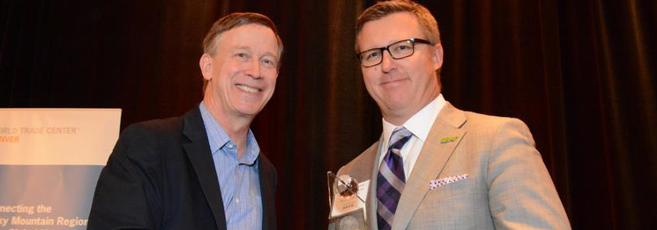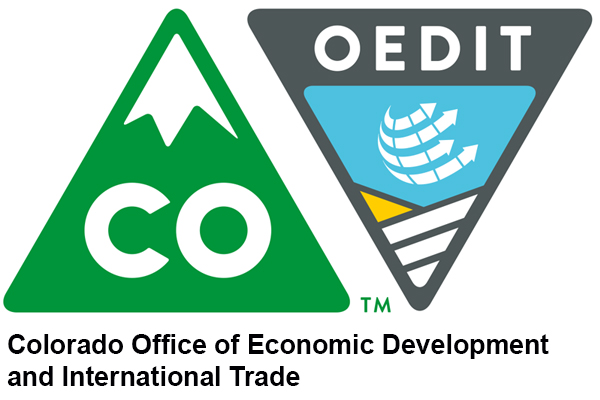The best way to predict the future is to create it. —Peter Drucker
We had our best business year in 2012. Why? Our business continues to thrive and prosper because it’s our objective to help our clients thrive and prosper in their organizations. Looking into the future and your success therein is building HP2—high-performance, high-profit organizations.
The outline for this level of success is not as complicated as many wish to make it. However, it does require a mindset that cannot be avoided. The mindset is executives having the courage to say yes to the possibilities, understanding the messiness of implementing real and positive change and lastly a solid grasp that any change worth making takes time. This brand of courage requires sincere, unbridled transformational leadership—nothing less will achieve radically successful results.
We’re successful because we seek out business owners and business executives who are ready to stop talking about a brighter future and are ready to take the actions required to make it so. These are the people who are taking ownership of their organizations’ future.
It seems elementary that organizations are working to achieve their strategic vision. However, we continue to uncover a significant disconnect with the perception of achieving that strategic vision with the reality of dealing with “now.” We continue to see that the biggest victim in the past economic downturn has been “organizational strategy.” Many organizations are locked into “now,” thinking there is no forest behind those trees.
Perhaps some of you have heard of the FUD factor—fear, uncertainty and doubt—which keeps most organizations locked in indecision and tactical short-term thinking. Those creating radically successful businesses look beyond the day-to-day and are returning to a strategic alignment.
From the first day we at Enlighten 360 begin working with clients we weave the Drucker quote into a possibility mindset for executives and those who comprise that organization. In essence, we take this quote and make it actionable. We contend that if you don’t take control of your future, someone will do it for you.
How can you create your own highly prosperous future? The future starts with the end in mind. If you’re an executive or business owner thinking about taking your operation to the next rung on the financial ladder in 2013 … here are the steps.
The Steps to Creating HP2 Organizations
Step one: Evaluate
Access, evaluate top-down, bottom up—no leader begins organizational strategy without a crystal clear understanding of the capacity and capability of the organization—right now.
There is an opportunity when you contract with a consultancy group that have the diagnostic tools to give clarity to the organization’s current status. A true assessment minus wishes, hopes and dreams creates a capability/capacity baseline, which allows for an achievable blueprint. A word of caution—we rarely find an organization that possesses the tools to effectively conduct a true organizational 360 assessment.
Another opportunity happens when you seek out the objectivity of outsiders in favor of internal management input. Going inside to solve strategic issues by enlisting those who may be the root cause of the issues or those who don’t have the helicopter view of the organization is insanity. We know that insanity is defined as doing the same thing over and over and expecting a different result. If you want something you’ve never had, you must do something you’ve never done. Being too close to the operational machinations is simply more fruitless discussions and internal cycling.
The third opportunity considers that after the problem/opportunity/strategic direction is identified comes the phrase “now what.” It’s the time when a company asks how to effectively clear the speed bumps and implement a success strategy. A common disconnect is trying to fix the issues with the same old internal programs or processes. The only constant is change, and new ways of creating HP2 organizations changes continually.
Step two: Align
Once organizations completely understand what’s missing and what’s preventing success in the access/evaluation phase, it’s time to align people, purpose, structure and systems.
There are seven game-changing components to create HP2, including:
1. A healthy organizational culture. To be sure, a healthy culture will provide the “keys to the kingdom” of high prosperity. Culture is a healthy organizational body—a learning organization and a place where the best and the brightest seek out employment. The culture projected onto your people will create a ripple effect with employees, customers and the general community. Whether you’ve created a healthy culture or a not-so-healthy culture, the word will spread. In today’s social media environment, the word is viral. How’s your culture?
2. Leadership—real leadership, real results. It’s a rough job to explain to people who think they’re leaders that they are not. It’s not because they’re not good people; they just haven’t developed the leadership skills required in today’s highly competitive environment. Businesses are competing for customers, workers, vendors and most of all relevance within the market. And, being an executive or the owner of a company does not automatically inject “leadership” into your style. It’s a skill that must be developed, over and over again. Once a “leader” assumes he or she has “it,” we have to start over completely. Leadership is the destination where we never arrive—it’s too dynamic.
3. Your people—engaged and re-engaged for higher contribution. Another Peter Drucker quote that we use daily is, “They’re not your employees, they’re your people.” The minute you think of your people as employees, you’ll get one—someone who shows up to just collect a check. If you want high-contribution, engaged workers, start thinking of those “people” who are making a substantial difference in growing your revenues, who are becoming trusted advisers to your customers, who are helping innovate better ways to conduct business, and who find new customers or more marketable products for your company.
4. Customers/clients or members, properly acquired, mean high-retention, high-profit ratios. Customer engagement is the path to HP2. Becoming the trusted adviser to your clients or customers is not selling—it’s providing value. I have vendors constantly trying to sell me “sales training” modules that they think would be appropriate for my clients. The truth is, there is maybe one in one thousand worth looking at, and I’m still looking for that “one” that I would share with my clients. These sales companies were created during an era of technic, the numbers game, manipulation and psycho-babble and haven’t fully realized the importance of providing value instead of just selling widgets or services.
5. Process efficiencies and continual process improvement. Process is your friend. Without it, your organization can easily be brought to its knees. At Enlighten, we spend a great deal of time with our clients to understand what processes they’re using that should stay or could go away. Organizations will often get into the process rut and will try to justify using processes that serve no useful purpose or may even slow/stop production. To become an HP2—this must end.
6. Organizational structure—becoming the employer of choice. Employer of choice is just one of many programs we provide to make the most of existing resources. It’s a simple process to mitigate turnover, which is a major expense that pounds the bottom line, as well as to reverse negative branding so that people seek out the company, stay longer and contribute more. One subset of the employer-of-choice model is to become a learning organization. We accomplished this by building a corporate university to tap into current successes and learning while developing programs that cover the basic “how to’s,” such as communicating effectively, building trust, presenting ideas effectively and building a high-performing mentality. Last, a knowledge-transfer program where outgoing people share valuable information within the organization for the benefit of all is imperative to becoming an HP2.
7. Measuring what counts. Companies have an array of metrics used to guide their specific business or business units. Defining and deciding which metrics mean the most to the strategic direction of the organization are very important, should minimize monitoring everything and help focus the organization on monitoring fewer key metrics that are actionable. The theory is that information is like food: consuming more of it doesn’t necessarily make you healthier. Eliminate unnecessary metrics and make the ones that count executable and framed in a timed component. As you monitor your progress, however, be prepared to change course.
Step three: Accelerate Financial Growth
When you accelerate financial growth, the results begin. Having the courage to implement change and partnering with a consultancy group that can clearly assess organizational strengths and weaknesses can help you effectively align the seven core functions of the organization. This creates sustainable organizational performance and profits.
Why is Now the Best Time to Create the HP2 Organization?
At a basic level, strategic planning is really a matter of survival, when done with a strategic alignment perspective in mind. Half-hearted efforts result in half-hearted progress; therefore, strong business fundamentals will help organizations of all shapes and sizes thrive. In today’s ever-changing marketplace, you either create change, or the lights slowly fade to darkness.
With the profound changes occurring in today’s marketplace, some organizations choose to allow FUD to manipulate organizational strategy down to consistent tactical panic … or there are those organizations predicting their future by creating it to suit their purpose and strategy.
The three simple steps—assess, align and accelerate—create an organizational profit engine by engaging the workforce, re-inventing customer relationships and developing leadership skills so that the company will have a financially sustainable future.
The future can be very bright for those willing to brave the complexities of strategic alignment and the daily execution on a plan. Knowing your next move is creating that future. Remember, you will own your future, or it will own you—it’s the same for all of us. It is time to be bold and to create the difference!
For over three decades, Steve Sorensen has helped companies achieve a competitive advantage by improving their sales strategy. This has consistently provided growth velocity and increased profitability for both companies where he was employed and now for his clients. Steve has successfully hired, trained, mentored, coached and led numerous national and regional sales teams. As president of Enlighten-360, LLC, Steve is directing his wealth of experience to help companies achieve increased revenue and velocity of growth through improved sales strategies. Steve has seen firsthand how creating and keeping raving fans for your business and products is the path to long-term profitability. To learn more, visit http://enlighten360.com or at [email protected].




